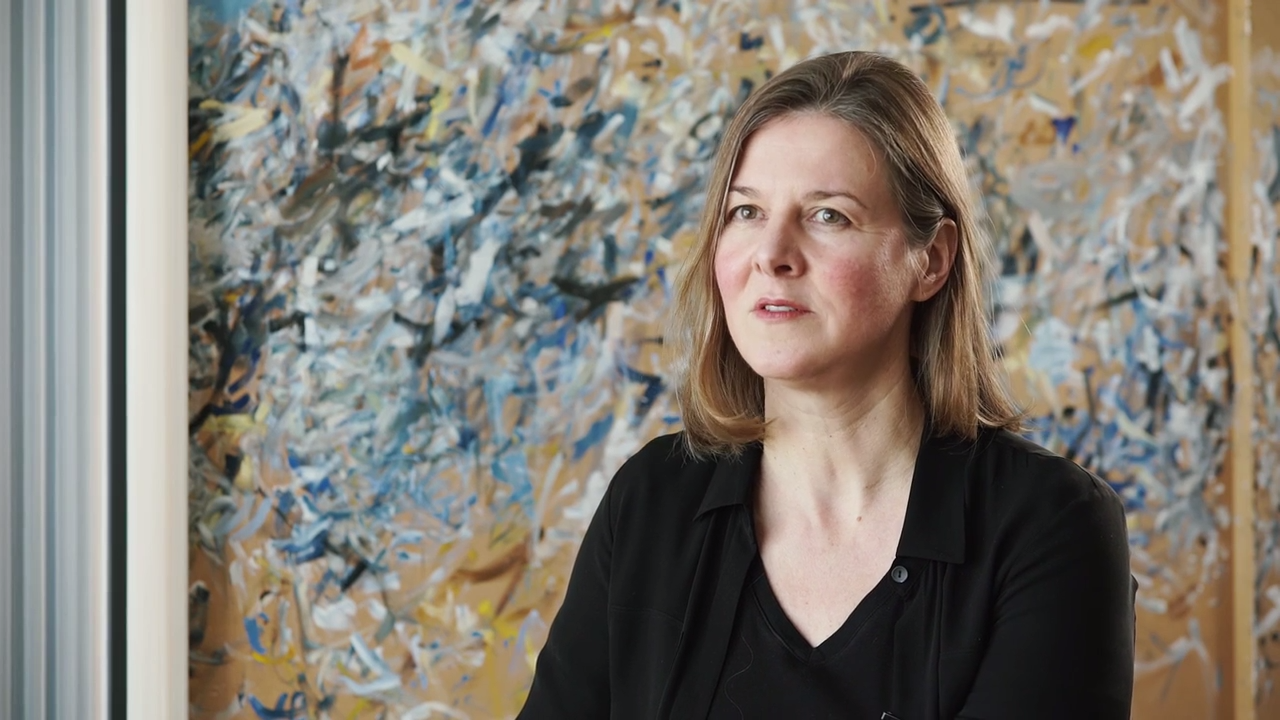
German-born painter Cornelia Thomsen began developing a series of works known as the “Stripe” paintings after she moved to New York from Germany roughly eight years ago.
“The paintings deal with basic questions of color, contrast, space, and lines,” Thomsen told artnet News in an interview. “The stripe paintings are color curtains that become stripes, or, stripes that become color curtains.”
Fresh off a well-received solo show at New York’s Leslie Feely Gallery, Thomsen talked to us about her latest body of work, how her process and approach has evolved over the years, and what she plans to tackle next.
The show at Leslie Feely, which was called “Strokes,” was Thomsen’s second solo outing at the gallery. It featured ten large oil “stripe” paintings, alongside four small stripe watercolors and half a dozen drawings in ink on paper.
“Cornelia has taken on a new direction since her last show in 2014,” said Leslie Feely about the show, which featured paintings and drawings. “The work has shifted focus from the colors emphasizing blue and yellow to a new series of paintings with a more subdued palette. There has been a strong emphasis on light and dark.”
Cornelia Thomsen, Stripes NR 102 103 (2016). Courtesy of the artist and Leslie Feely Gallery, New York.
According to Feely, Thomsen has a strong collector base in the US and abroad. “The paintings and drawings are equally in demand,” she said. Prices for Thomsen’s works range from $10,000 to $65,000.
Thomsen spent the first 20 years of her life in East Germany, living under a socialist government, an aspect of her life that is still a strong influence on her work. Growing up, she says she began drawing and painting to understand the world better. “I still do this today,” she said. “I observe, simplify, and abstract.”
Cornelia Thomsen, Structures NR 36 (2016). Courtesy of the artist and Leslie Feely Gallery, New York.
Her professional career as an artist started at the Meissen Porcelain company, where she was trained to copy baroque patterns onto porcelain, skills she continues to use to realize her ideas.
“After the Berlin wall fell,” she said, “I was finally able to study fine art and bring together the craft I had learned in Meissen, and the concepts I wanted to express. My final paintings at the University were an autobiographical work about my upbringing in Eastern Germany.” In 2015, those paintings were exhibited at the German Consulate in New York for an exhibition commemorating the 25th anniversary of the fall of the Berlin Wall.
Thomsen’s time at Meissen inspired a series of dishes made out of paper and intended as a satirical work about the daily environment there. The artist combined a traditional porcelain plate pattern with socialist slogans to juxtapose conflicting concepts. “We produced luxury goods for the capitalist market while being surrounded by socialist propaganda,” she said.
In 2015, the Los Angeles County Museum of Art acquired a painting for its permanent collection as did the Ackland Art Museum at the University of North Carolina, Chapel Hill. More recently, the Minneapolis Institute of Art acquired one of her Stripe paintings.
Asked what’s next, Thomsen told us, “My new focus will be on watercolor again.”